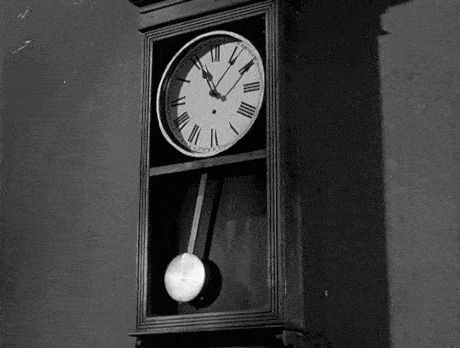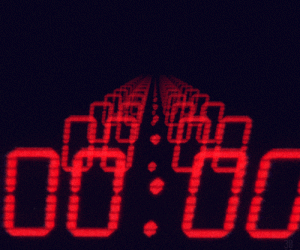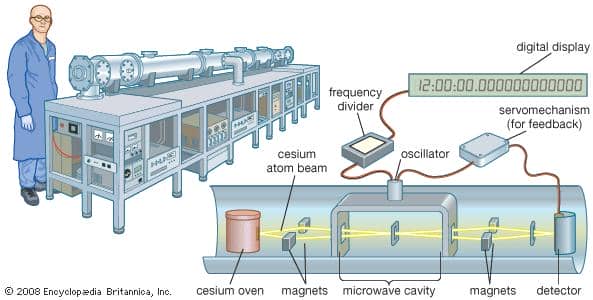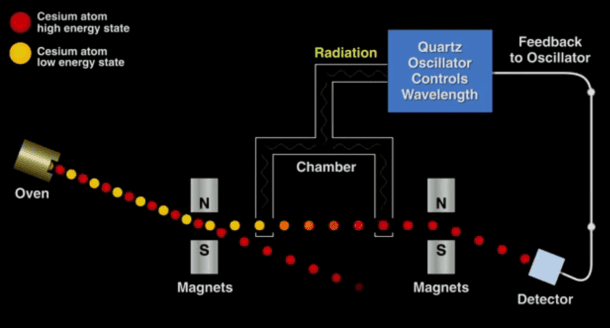The significance of time and its accuracy is uncanny. No matter in which form you observe time, it will always evade you. Be it alarm clocks, meeting schedules, computers or time limits to achieve something. Time clouds everyone and everything we do, see, feel or share.
So what makes us think that we have the accurate time. That the time we believed to be true is, in fact, the time, everyone around us has. Let us begin the journey into the very fabric of time.

A swinging pendulum as a foundation to measure time and a basis for a clock can turn out to be a bad idea for two reasons; the time it takes for a pendulum to complete one cycle, or its frequency, can vary depending on the length of the pendulum. Say we standardize the length, yet the material can expand in the heat and will make time pass slower at the equator than at poles. Similarly, the gravity will effect movement of the pendulum as well, which does not remain constant throughout the planet. Not to mention what would happen if we are in space, pendulum clocks will no longer work.

To build a clock on a solid foundation, let us look inside an atom. The atoms have a nucleus containing nucleons (protons and neutrons). And then some electrons orbit the nucleus, which electron can inhabit which orbit depends on their energy levels. When electrons absorb or release energy, they can jump into higher or lower orbits respectively. This process is called transition. The amount of energy released or absorbed during each of these transitions remains precisely the same.

This energy is in the form of electromagnetic radiation, which can range from visible light to microwaves. Since radiation or waves of energy can have certain frequencies, we can measure it. Hence like the frequency of a pendulum, the frequency of transition energy of an electron can be used for keeping the world ticking.
The atomic clocks based on quartz crystal use the piezoelectric property which means it generates a small amount of current under pressure; also it means that it vibrates at a precise frequency of 32,768 Hertz when current is applied to it. Hence, one second time can be defined using a Quartz crystal. The drawback is that crystal vibration is a cause of loss of energy, making it slow and causing variation in frequency.

What it needed was a feedback loop, where each time the crystal loses its energy, it will be zapped by an electric current to maintain a period. This is where the Cesium atomic clocks come in. Cesium has an atomic number of 55 i.e. an ideal 2-8-18-18-8-1 structure, with only one electron in its outermost shell. The atom, as explained earlier, can exist in two states, low energy state and high energy state. The resonant frequency of Cesium is 9,192,631,770 cycles per second, which implies that the radiation of the same amount will be needed to have the transition occur in Cesium.
How may you ask? Well at first, Cesium Ions are extracted from Cesium chloride by heating it. The steam contains Cesium in both states, high and low energy. The magnetic strip will sort the low energy ions from the high energy ions creating two channels of flow. Low energy ions are bombarded with radiation of same resonant frequency as Cesium, to raise their energy levels. Next, the channel is again divided, and the high energy ions are conveyed to a detector, which will convert the ions into electricity. The more high energy cesium ions there are, the more electricity is generated.

This current is applied to a quartz oscillator that scores one pulse, also responsible for managing frequency of incident radiation. Now when the quartz oscillator experiences a loss in energy, the radiation becomes weak. The number of Cesium atoms in high energy state will drop, motivating an electric circuit to zing the oscillator to urge the correction of defined ‘period.’ The accuracy of an atomic clock can be seen by the fact that it loses a 1 second in 138 million years.
Credits: National Physical Laboratory


